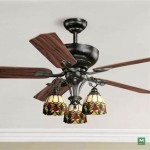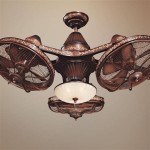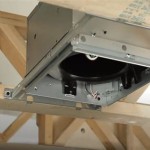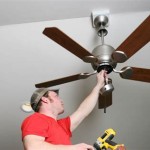How to Cut Crown Molding on Vaulted Ceiling Walls
Installing crown molding adds a touch of elegance and sophistication to any room. However, tackling vaulted ceilings with crown molding introduces a unique set of challenges due to the compound angles involved. Precise cuts are crucial for achieving a seamless and professional finish. This article provides a comprehensive guide to cutting crown molding for vaulted ceilings, outlining the necessary tools, techniques, and considerations for a successful installation.
Understanding Vaulted Ceiling Geometry
Vaulted ceilings, unlike standard flat ceilings, have sloping surfaces that intersect at an angle. This angle, combined with the angle at which the crown molding meets both the wall and the ceiling, results in compound miter and bevel cuts. Accurately determining these angles is the foundation for successful crown molding installation. A spring angle represents the angle at which the crown molding sits against the wall. This angle is typically either 45 degrees or 52 degrees. It’s essential to identify the spring angle of your crown molding, as this value will be used in calculating the required cut angles.
The wall angle, or the angle formed by the two meeting walls where the vaulted ceiling slopes, will also vary depending on the design of the house. This angle must be measured precisely using a protractor or angle finder. Once the wall angle and spring angle are known, the necessary miter and bevel angles for the crown molding can be calculated. Online calculators and miter saw angle charts exist specifically for calculating these angles for crown molding on vaulted ceilings. These tools take the guesswork out of the process and ensure accurate cuts.
It is crucial to differentiate between inside corners and outside corners associated with crown molding installation. Inside corners are formed where two walls meet in a concave manner while outside corners are formed where two walls meet in a convex manner. The angles required to cut crown molding for these corners will be different, and one must calculate them to achieve a proper fit.
Essential Tools and Materials
Successful crown molding installation on vaulted ceilings requires the right tools and materials. Having these items readily available will streamline the process and ensure accurate and clean cuts.
A miter saw equipped with a sharp blade is paramount. A 12-inch miter saw is generally recommended for cutting crown molding due to its larger cutting capacity, which is necessary for wider pieces. The saw should be capable of making both miter and bevel cuts. The accuracy of the miter saw is crucial; ensure it is properly calibrated before beginning any cuts. Also, select a blade with a high tooth count, specifically one designed for cutting fine trim work. This will minimize splintering and produce clean, precise cuts.
A protractor or angle finder is essential for accurately measuring the wall angle. Digital angle finders offer precise readings and can be particularly helpful in situations where the wall angle is not easily discernible. A measuring tape, pencil, and a square are necessary for marking and transferring measurements to the crown molding.
Safety glasses are a mandatory safety precaution when operating a miter saw. Hearing protection is also advisable, especially when making a large number of cuts. Finally, wood glue, caulk, and finishing nails are needed for securing the crown molding to the wall and ceiling and for filling any gaps or imperfections.
Consider investing in a crown molding jig or fence. These tools help to hold the crown molding in the correct orientation while cutting, ensuring consistent and accurate results. Some commercially available jigs attach directly to the miter saw, while others are stand-alone devices. A jig can be particularly helpful for beginners or those who are less confident in their cutting skills.
Cutting Techniques for Vaulted Ceiling Crown Molding
Cutting crown molding for vaulted ceilings requires a specific technique to account for the compound angles. The key is to understand how to position the crown molding against the miter saw fence to achieve the desired cut.
For inside corners, the crown molding should be placed upside down and backwards on the miter saw. This means the side that will be against the ceiling should be facing down, and the side that will be against the wall should be facing the saw fence. The miter and bevel angles should be set according to the calculations derived from the wall angle and spring angle. Cut the first piece of crown molding, then flip the board over horizontally (not vertically) and cut the second piece. Check how the pieces fit together. Minor adjustments may be required after the first test cut. It's advisable to cut slightly long and then fine-tune the fit to the exact length.
For outside corners, the crown molding is also placed upside down and backwards on the miter saw, but the miter and bevel angles will be different from those used for inside corners. Again, calculate the correct angles based on the wall angle and spring angle. Cut the first piece of crown molding, then flip the board over horizontally (not vertically) and cut the second piece. Fine-tuning the fit is just as important for outside corners as it is for inside corners. Ensure the joint is tight and seamless before securing the crown molding.
It is crucial to practice on scrap pieces of crown molding before cutting the actual pieces. This allows you to verify your angle calculations and refine your cutting technique without wasting expensive material. Make several test cuts, adjusting the miter and bevel angles as needed until you achieve a perfect fit. Label each test cut with the corresponding angles to create a reference library for future installations.
When installing the crown molding, use construction adhesive along with finishing nails to secure it to the wall and ceiling. The adhesive will provide a strong bond, while the nails will hold the molding in place while the adhesive cures. Use a nail gun with a depth adjustment to avoid over-driving the nails, which can damage the crown molding. After the adhesive has cured, fill any nail holes with wood filler and sand smooth. Finally, caulk any gaps between the crown molding and the wall or ceiling to create a seamless finish. This will also prevent air leaks and improve the energy efficiency of the room.
Vaulted ceilings often present challenges due to uneven surfaces. Minor imperfections in the wall or ceiling can cause gaps between the crown molding and the surface. To address these issues, use shims behind the crown molding to create a level surface. The shims can be thin pieces of wood or plastic and should be placed strategically to support the crown molding and eliminate any gaps. Secure the shims with construction adhesive or small nails.
In instances where the vaulted ceiling features compound curves or unusual angles, consider using flexible crown molding. This type of molding is made from a flexible polymer that can be easily bent to conform to the contours of the ceiling. Flexible crown molding can be cut with a standard miter saw and installed using the same techniques as standard crown molding. However, it is essential to use a strong adhesive specifically designed for flexible materials.
Precise measurements and accounting for the intricacies of vaulted ceiling geometry are crucial for a professional-looking installation. Shortcuts or approximations in measuring and cutting will lead to noticeable gaps and misalignment. Dedicate the time and effort needed to achieve precise cuts and a seamless finish. Patience, practice, and a methodical approach are key to success when cutting crown molding for vaulted ceilings.

Install Crown Molding Cathedral Vaulted Ceiling

How To Install Crown Molding On Vaulted Or Cathedral Ceilings The Joy Of Moldings

How To Cut A Vaulted Sloped Cathedral Up Crown Molding Corner The Easy Way With Creative
Running Crown On Cathedral Ceilings Jlc

Nightmare Job Vaulted Ceiling Crown Molding Mobile Home Bedroom Renovation

Installing Crown Molding Around A Cathedral Ceiling Fine Homebuilding

Crown Molded On Sloped Ceiling

Crown Molding On Angled Ceilings Makely

Installing Crown Moulding Part Two Canadian Woodworking

How To Install Crown Molding On Vaulted Or Cathedral Ceilings The Joy Of Moldings
Related Posts








